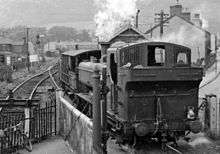Port Talbot Railway and Docks Company
Port Talbot Railway and Docks Company | |||||||||||||||||||||||||||||||||||||||||||||||||||||||||||||||||||||||||||||||||||||||||||||||||||||||||||||||||||||||||||||||||||||||||||||||||||||||||||||||||||||||||||||||||||||||||||||||||||||||||||||||||||||||||||||||||||||||||||||||||||||||||||||||||||||||||||||||||||||||||||||||||||||||||||||||||||||||||||||||||||||||||||
|---|---|---|---|---|---|---|---|---|---|---|---|---|---|---|---|---|---|---|---|---|---|---|---|---|---|---|---|---|---|---|---|---|---|---|---|---|---|---|---|---|---|---|---|---|---|---|---|---|---|---|---|---|---|---|---|---|---|---|---|---|---|---|---|---|---|---|---|---|---|---|---|---|---|---|---|---|---|---|---|---|---|---|---|---|---|---|---|---|---|---|---|---|---|---|---|---|---|---|---|---|---|---|---|---|---|---|---|---|---|---|---|---|---|---|---|---|---|---|---|---|---|---|---|---|---|---|---|---|---|---|---|---|---|---|---|---|---|---|---|---|---|---|---|---|---|---|---|---|---|---|---|---|---|---|---|---|---|---|---|---|---|---|---|---|---|---|---|---|---|---|---|---|---|---|---|---|---|---|---|---|---|---|---|---|---|---|---|---|---|---|---|---|---|---|---|---|---|---|---|---|---|---|---|---|---|---|---|---|---|---|---|---|---|---|---|---|---|---|---|---|---|---|---|---|---|---|---|---|---|---|---|---|---|---|---|---|---|---|---|---|---|---|---|---|---|---|---|---|---|---|---|---|---|---|---|---|---|---|---|---|---|---|---|---|---|---|---|---|---|---|---|---|---|---|---|---|---|---|---|---|---|---|---|---|---|---|---|---|---|---|---|---|---|---|---|---|---|---|---|---|---|---|---|---|---|---|---|---|---|---|---|---|---|---|---|---|---|---|---|---|---|---|---|---|---|---|---|---|---|---|---|
Legend
| |||||||||||||||||||||||||||||||||||||||||||||||||||||||||||||||||||||||||||||||||||||||||||||||||||||||||||||||||||||||||||||||||||||||||||||||||||||||||||||||||||||||||||||||||||||||||||||||||||||||||||||||||||||||||||||||||||||||||||||||||||||||||||||||||||||||||||||||||||||||||||||||||||||||||||||||||||||||||||||||||||||||||||
The Port Talbot Railway and Docks Company (PTR) operated the Port Talbot Railway and the docks at Port Talbot, South Wales.
Background
Inheriting his Aberavon and Margam estates from his father, Christopher Rice Mansel Talbot enjoyed the cash flow from the region's industrialisation, including copper smelted at nearby Neath since 1584, and tin and ironworks at Pontardawe.
Talbot recognised that improved transportation could stimulate industrial growth. As a Member of Parliament he introduced a Bill in 1834 to improve the old harbour at Aberavon. Two years later, a further Bill provided for the harbour's expansion and a change of name to Port Talbot in his honour. These combined port assets were owned by the newly formed Port Talbot Company Limited (PTC). Through the PTC, Talbot encouraged the development of Swansea docks.[1]
Talbot's interests then developed into railways. He became a shareholder and subsequently chairman in the South Wales Railway Company, which was acquired by the Great Western Railway (GWR) in 1863, with Talbot consequently joining the board of the GWR.[1]
Formation
In 1894 Talbot changed the name of the PTC to the Port Talbot Railway and Docks Company (PTR&D), and began developing links to local existing tramways and new railway projects, that would allow them to ship their goods via his docks.[1] Following his death in the same year, and as his son Theodore Mansel Talbot had died in 1876,[2] Talbot's daughter Miss Emily Charlotte Talbot inherited his assets and estates.[3] Taking over the railway project, she promoted the PTR&D in order to realise the industrial potential of the extensive and highly industrialised Margam Estate.[1]
The railway opened in 1897.[4] However, in 1908 the GWR took over running of the system, allowing the PTR&D directors to concentrate on their docks and associated steel works. Resultantly that same year, three directors of the PTR&D subsequently bought the assets from the receiver of the South Wales Mineral Railway (SWMR), which had opened in 1863 to connect the collieries at Glyncorrwg to a new dock at Briton Ferry. The absorbed SWMR was then leased to the GWR via the PTR&D. Spinster Emily Charlotte Talbot died on Saint Matthew the Apostle's Day, 21 September 1918, with her fortune passing to her nephew Andrew Fletcher and niece Eveline Fletcher.[3] Following railway grouping, the railway side of the PTR&D was fully absorbed by the GWR on 1 January 1922.[1]
Today, with the closure of most of the most of the collieries and metal working assets in South Wales, PTR&D and the SWMR which were built as industrial-connecting railways, are closed. A map showing the relative positions of the Port Talbot Railway, the South Wales Mineral Railway, the Rhondda and Swansea Bay Railway and the Great Western Railway can be found here.[5]
Stations
Route map [6]
PTR locomotives
- For a list of classes see Locomotives of the Great Western Railway
_0-6-0ST_No.813_at_Bewdley.jpg)
- Port Talbot Railway 0-6-2T (Stephenson)
- Port Talbot Railway 0-8-2T (Cooke)
- Port Talbot Railway 0-8-2T (Sharp Stewart)
- Port Talbot Railway 0-6-0ST (Hudswell Clarke)

When it was absorbed by the GWR on 1 January 1922, the PTR operated a total of twenty-two engines of seven different classes, built by four distinct locomotive manufacturers. The last of the ex-PTR locos was withdrawn from service by the GWR in 1948.[7]
One Port Talbot Railway locomotive (0-6-0ST PTR No. 26, GWR No. 813) is preserved on the Severn Valley Railway.
See also
References
- Notes
- 1 2 3 4 5 Robin G. Simmonds. The Port Talbot Railway & Docks Company and the South Wales Mineral Railway. ISBN 9781899889662.
- ↑ http://www.st-theodore.org.uk/the-talbot-family/theodore-mansel-talbot/
- 1 2 http://www.st-theodore.org.uk/the-talbot-family/emily-charlotte-talbot/
- ↑ railways
- ↑ South Wales Mineral Railway
- ↑ RAILSCOT | Port Talbot Railway and Docks Company
- ↑ Casserley 1966, pp. 106–109
- Bibliography
- Casserley, H.C. (1966), Locomotives at the Grouping - 4 - Great Western Railway, Ian Allan Limited